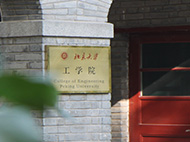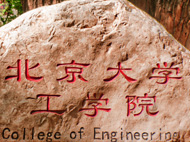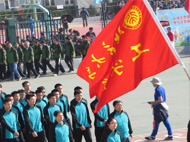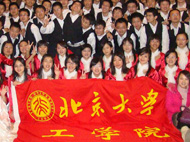主 办:能源与资源工程系
报告人:王聪
时 间:上午10:00-11:00
地 点:方正大厦301会议室(地铁北大东门站东南口方正大厦)
主持人:张作泰 特聘研究员
报告内容摘要
Ladle processing of interstitial-free (IF) steel melts involves de-oxidation by Al followed by Ti addition for binding the interstitial elements C and N. The de-oxidation products are often found to contain Ti and this is not predicted by equilibrium conditions. It has been suggested that Ti-containing inclusions could cause clogging of the submerged entry nozzle, decrease continuous casting productivity, and is a source of surface defects on the steel products. It is the aim of this project to investigate whether the existence of Ti-containing inclusions can be the results of transient conditions, which can be caused by (i) local and temporary variation of the Ti/Al, (ii) fluctuations in melt temperature and (iii) changes in O availability.
The approach undertaken in this study is to simulate transient conditions for the Fe-Al-Ti-O melts and sample the melts as a function of time during a time period that is of relevance to industrial ladle processing. The samples are characterized for inclusion shape, size and chemistry through scanning electron microscopy (SEM), inclusion structure and detailed chemistry through transmission electron microscopy (TEM) and chemical analysis of the melt. The influences of the following variables on the inclusion characteristics have been investigated: 1) Ti source, 2) Ti vs. Al ratio, 3) temperature and 4) time between Al and Ti additions. The starting O content was in all cases in the range between 330-460 ppm.
It is advised that for the generic IF steel having 600 ppm of Al, with the maximum interstitial contents of 20 ppm for C and N, respectively, the totally required Ti content (Ti*) should be 298.6 ppm to lead to a final Ti/Al ratio of 1/4 and thus no appreciable inclusion morphological changes, for the industry practice if an inclusion modification is not desired.
In addition to the work on clean steel, I would also like to briefly address research projects led by me on aluminum recycling, super-abrasive grinding wheel manufacturing, and super alloy vapor phase processing, respectively.
报告人简介
Prior to joining the Department of Materials Science and Engineering of the Northwestern University, Dr. Cong Wang had been with the Saint-Gobain High Performance Materials Research and Development Center and the Alcoa Technical Center, respectively. He obtained his PhD from the Center for Iron and Steelmaking Research of Carnegie Mellon University in 2009.He finished his MS from the Institute of Metal Research, Chinese Academy of Sciences, and BS from Northeastern University, both with highest honors.
He is the Society of Manufacturing Engineers (SME) 2014 Marvin F. DeVriesOutstanding Young Manufacturing Engineer Award winner, and The Minerals, Metals and Materials (TMS)2011 Young Leader Professional Award recipient. He was also selected to attend the Emerging Leaders Alliance Capstone Program by the United Engineering Foundation. Recently, he has been selected to receive the Thousands of Talents Award (Youth Category) by the Central Organization Department.
He is on the Key Reader rank of Metallurgical and Materials Transactions. He also serves the editorial boards for International Journal of Refractory Metals and Hard Materials, Journal of Materials Science and Technology, and Journal of Materials Engineering and Performance. Currently, he is the Vice Chair of the TMS Energy Committee, and serves theASM Marcus A. Grossman Young Author Award/Henry Marion Howe Medal Selection Committee.He (co)-chaired/is chairing REWAS 2013 (Global Conference on Sustainability), Energy Technology and Carbon Dioxide Management Symposium (2013, 2014 and 2015), Computational Modeling and Simulation of Advanced Materials for Energy Applications (2014), and Materials Processing Fundamentals Symposium (2012, 2013 and 2014).
欢迎广大师生参加!
联系人:张作泰 82524880, 13436440288









